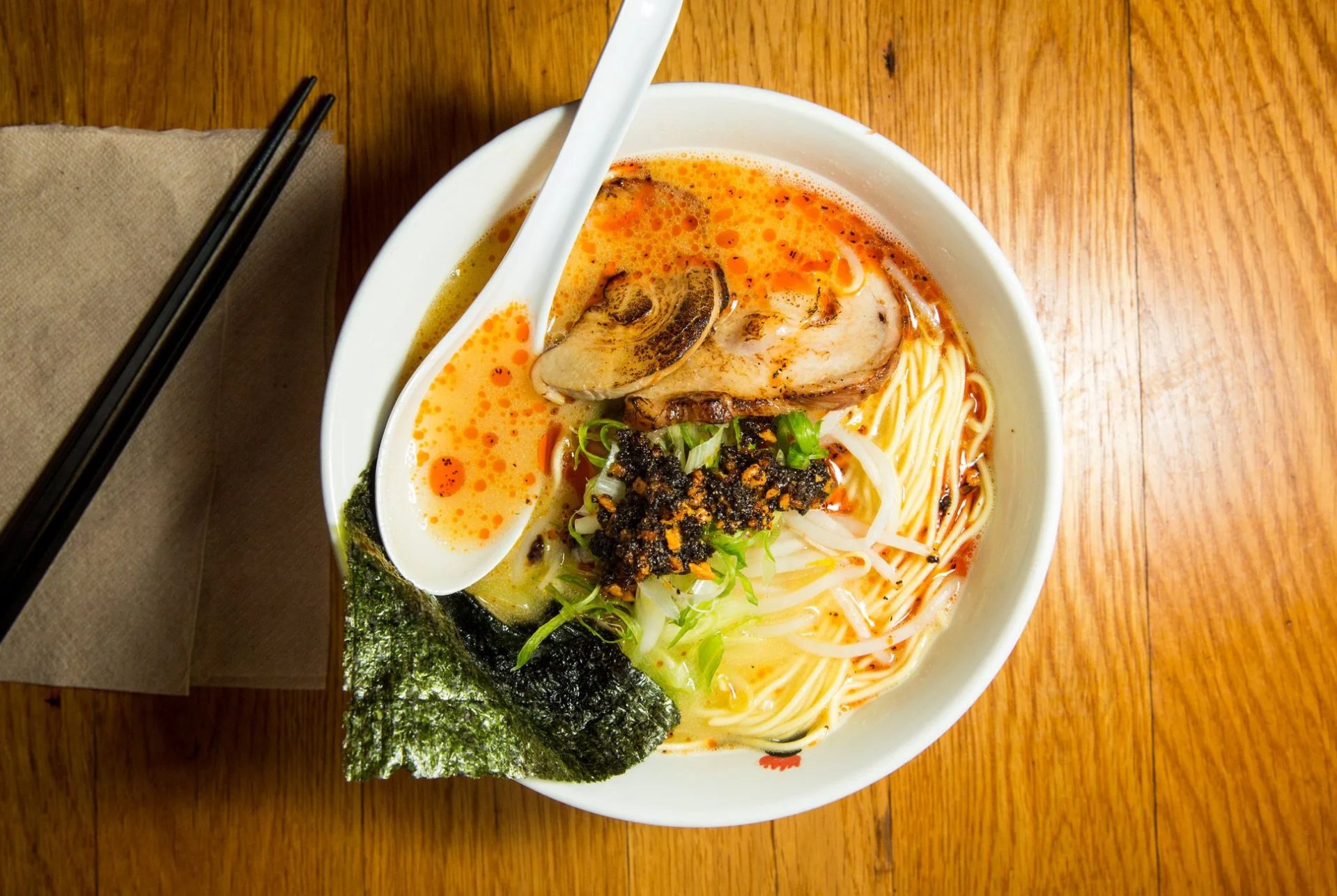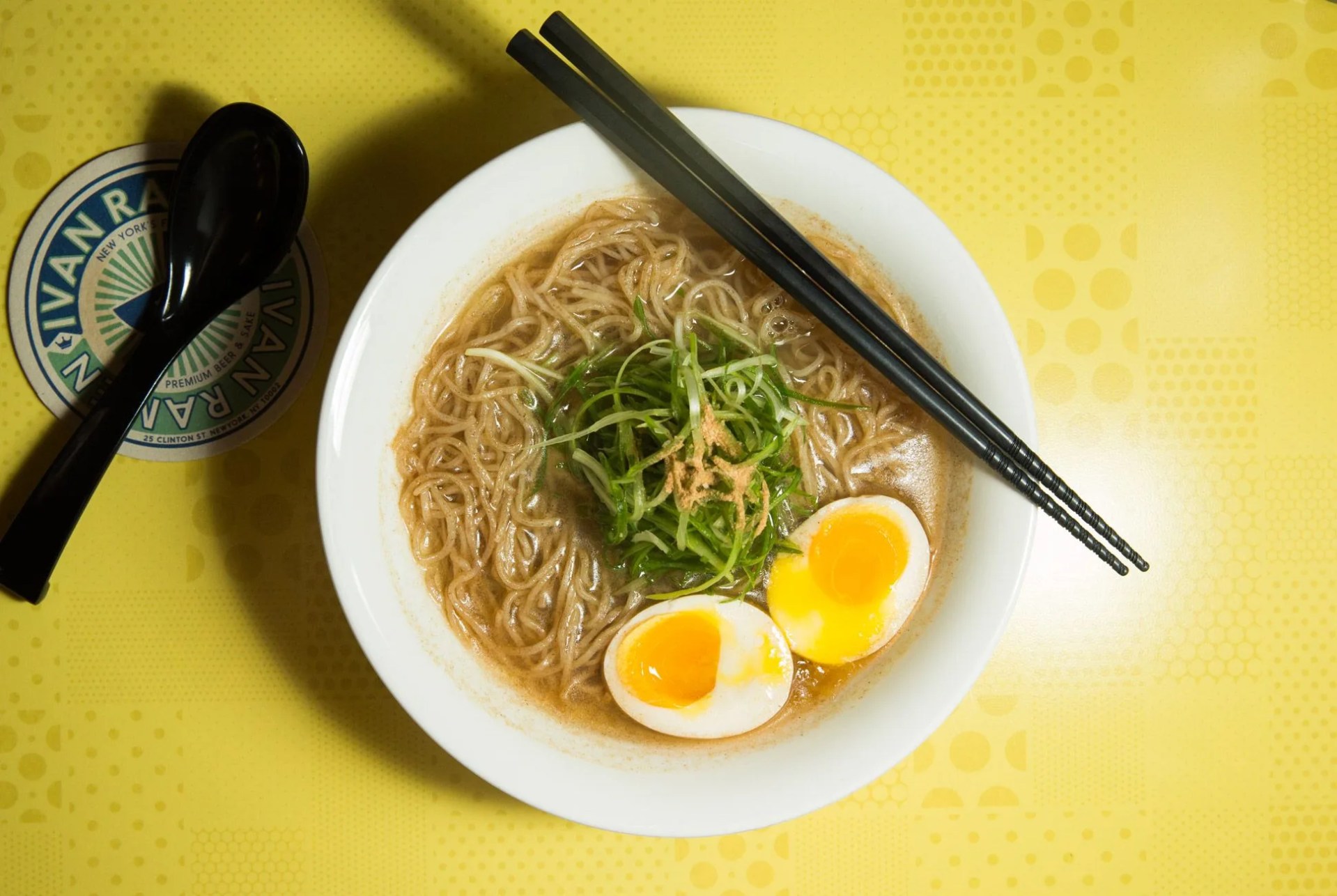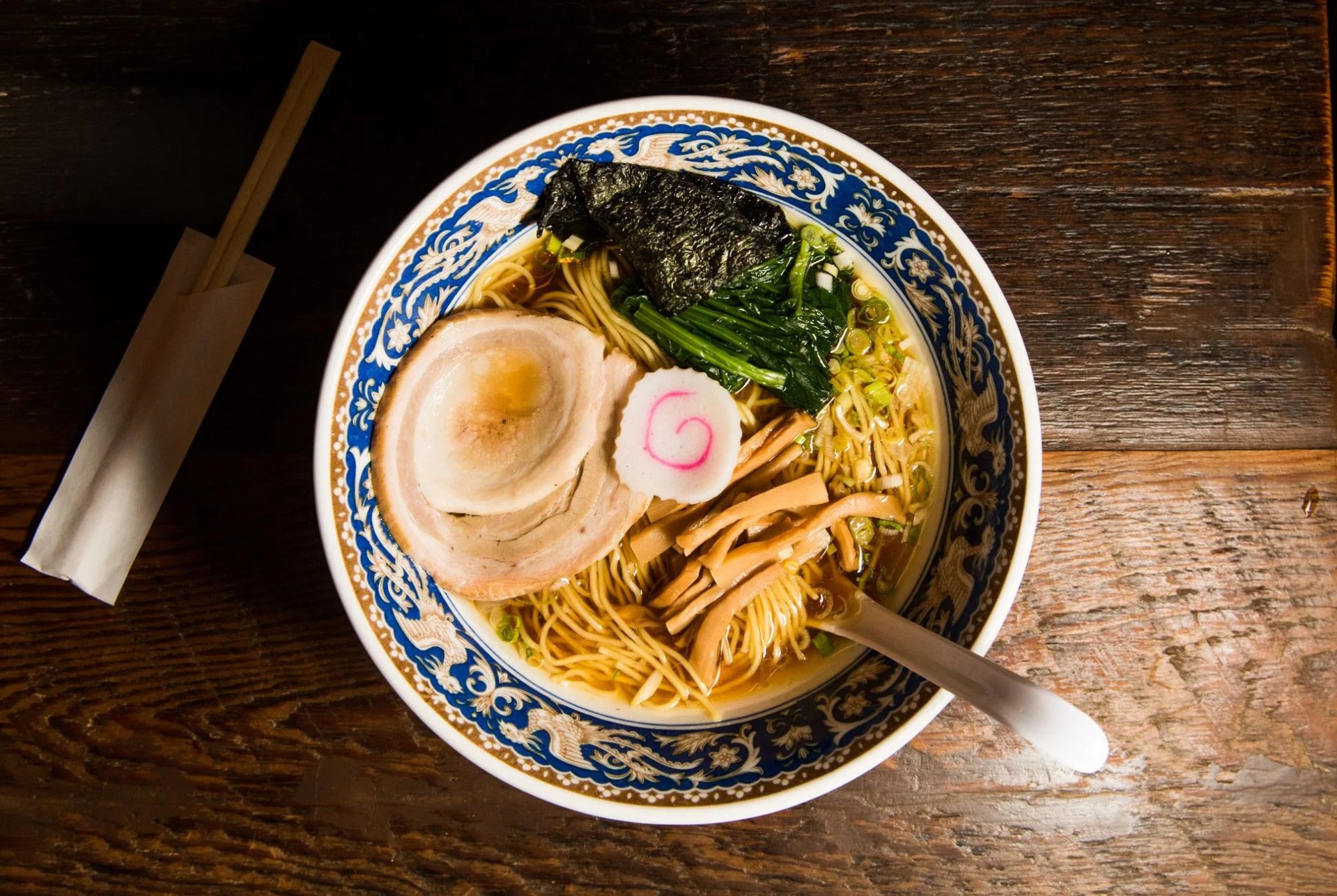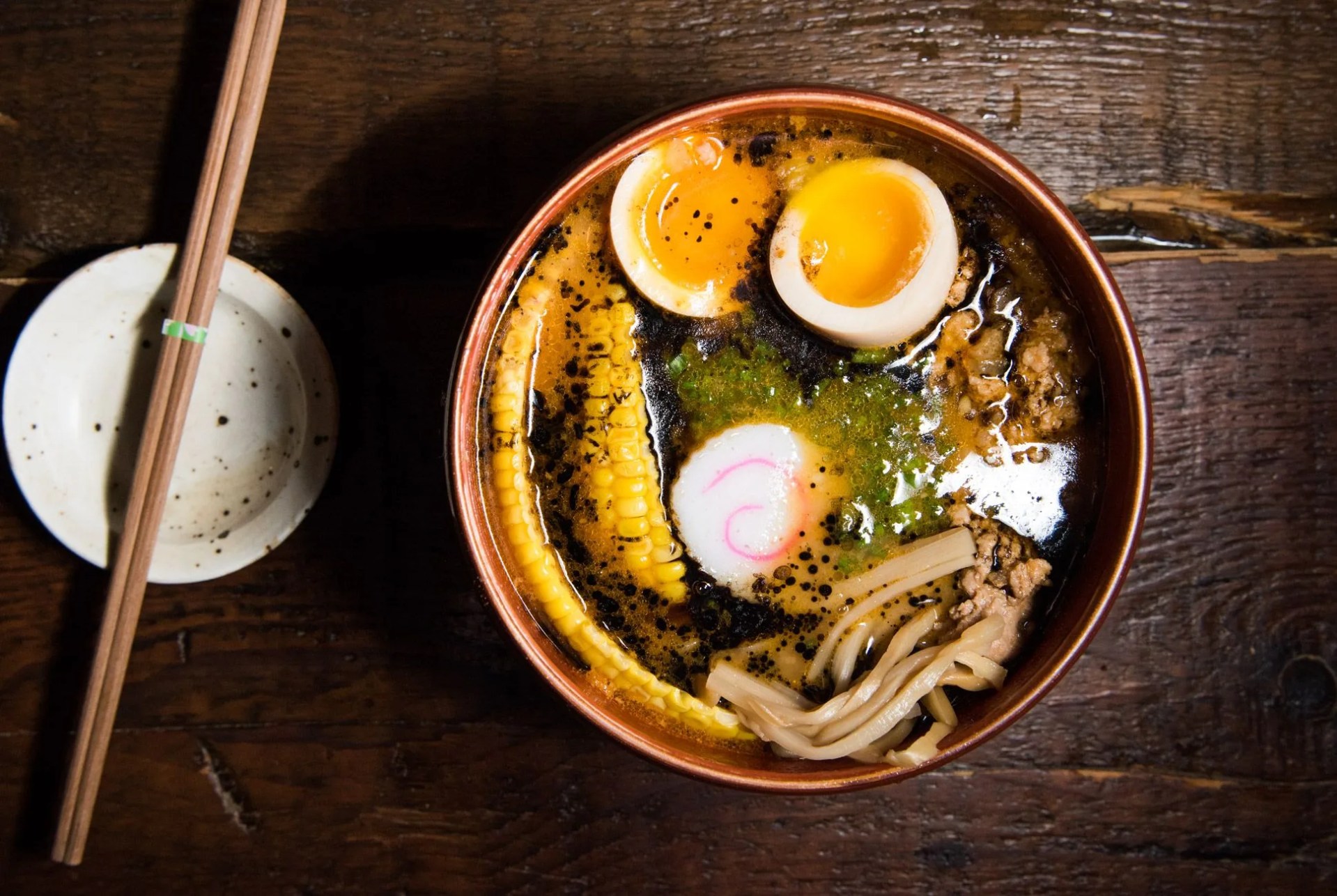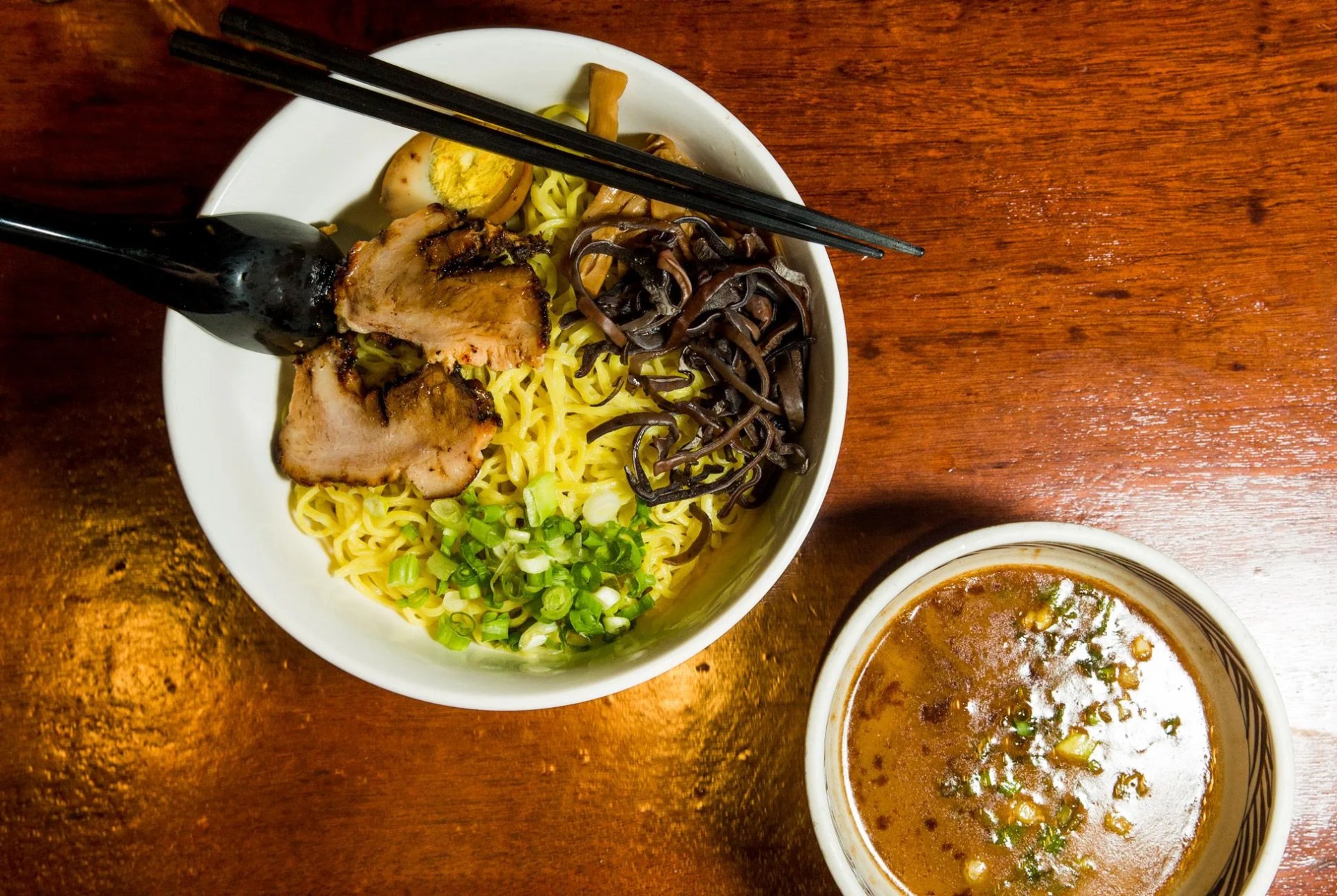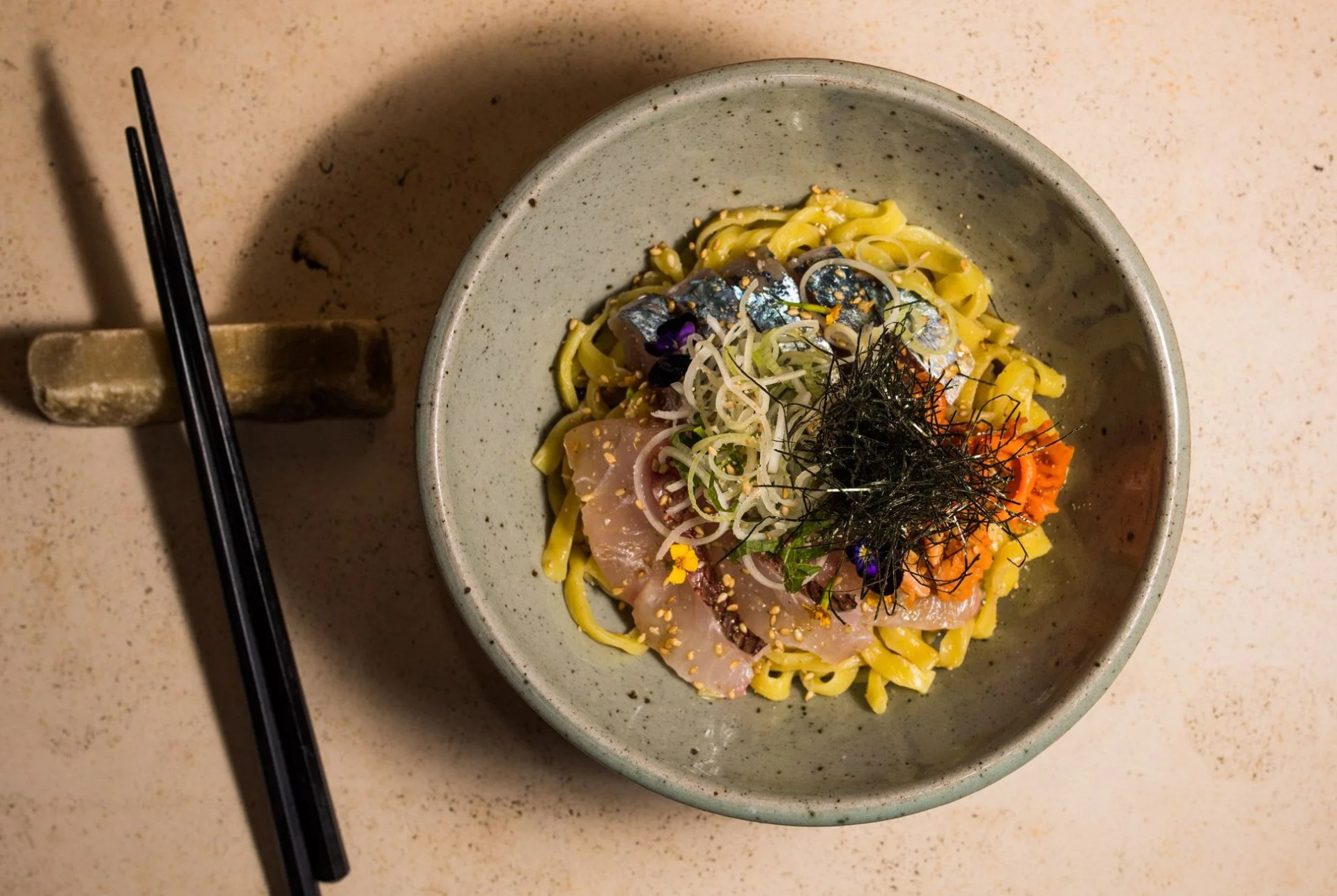The epic of New York City ramen begins in the early 2000s, set to the loud, grimy backdrop of the East Village, where a small subculture of expats and enthusiasts collectively dubbed a small cluster of ramen restaurants the “NYC ramen belt.” Back then, Americans at large, more familiar with five-for-a-dollar instant noodle cups, understood ramen as a quick fix, one popular in college dorm rooms for its tasty combination of MSG and cost-effectiveness. The idea of an individual noodle bar, or ramen-ya, as such dedicated ramen restaurants are called in Japan, was still foreign to the average American eater. So, too, was the concept of ramen as craft, whereby dishes can take days to prepare and years to master, and are known in their home country for all those nuances and variations in both noodle and broth.
Fast-forward to the present day, and you find shops like Ippudo, on Fourth Avenue, which greets patrons with the sort of sick humor that only comes from news of a three-hour wait time (or longer) for a humble bowl of soup and noodles. It’s the same story across the five boroughs, from ramen-yas in Long Island City to Downtown Brooklyn, Carrol Gardens and all parts of Manhattan. And that’s just New York. Similar narratives of ramen’s popularity are being written in cities such as Los Angeles, Portland and Houston, which have all undergone their own ramen booms in recent years.
For connoisseurs and curious palates, however, ramen’s transformation from dorm room staple to the ultimate foodie comfort food isn’t just confirmed through the sheer number of ramen restaurants outside Japan, nor in their respective wait times and the amount of people who willingly accept them. The scale of ramen’s splash stateside (proof, too, that it’s not just another temporary trend), can be found in the surging diversity of both classic and innovative styles now offered to American eaters. These range from cold, broth-less ramen that comes with concentrated dipping sauce (tsukemen) to the more traditional soup-plus-noodles combination of yesteryear.
Though Japan will forever reign as the epicenter of ramen culture — there, annual guide books are published to keep otaku (or “fanatics”) up to speed on the country’s ever-growing number of regional variations — United States-based chefs, and eaters, are no longer novices when it comes to the finer points of ramen consumption. Below are the most relevant styles of ramen you can find outside of Japan, along with where you’ll find them in one of ramen’s new adopted homes away from home: New York City.
Tonkotsu
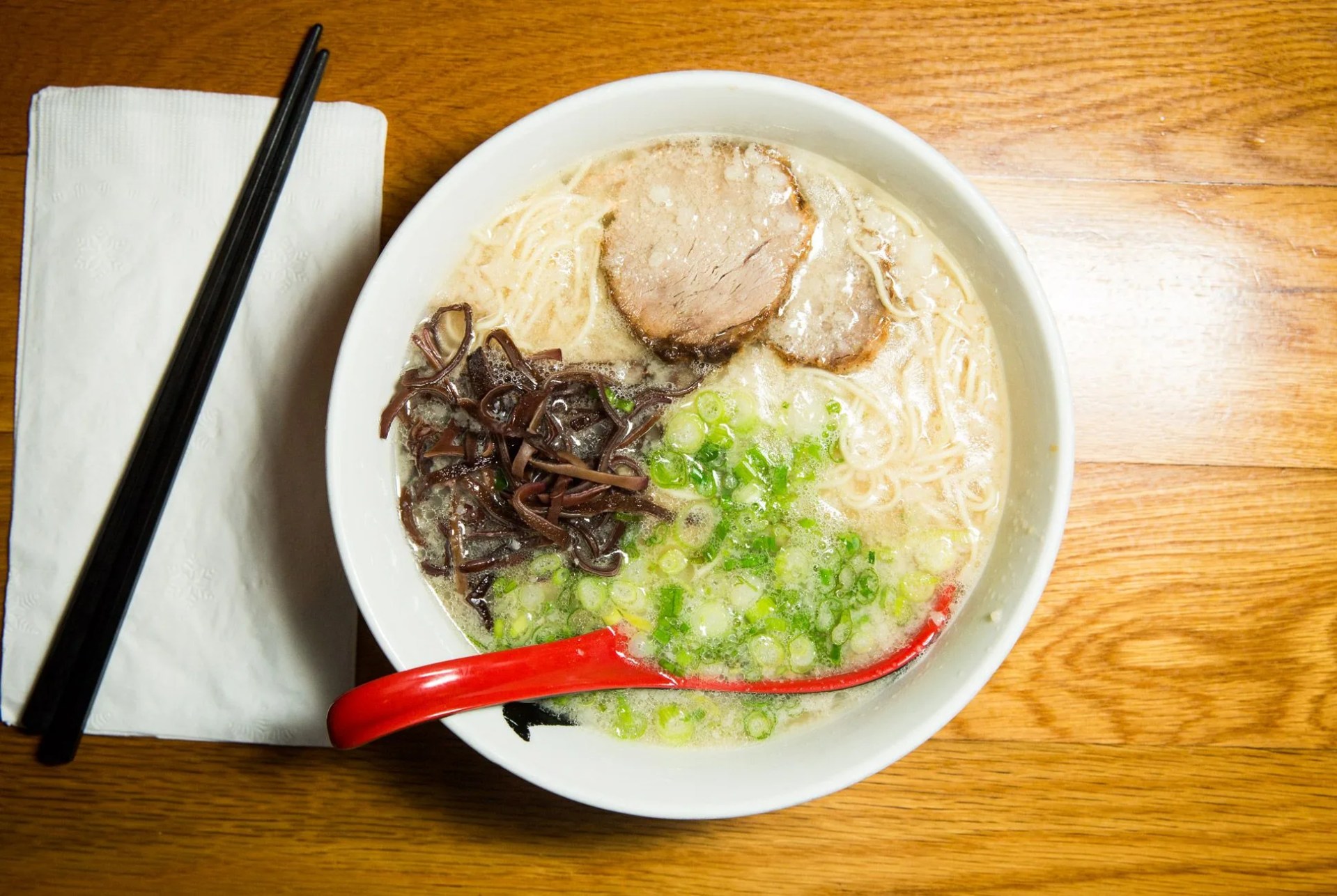
Originating in Fukuoka, Japan’s soulful city to the south, tonkotsu (not to be confused with tonkatsu, a breaded pork dish) is characterized by its opaque, funky-smelling broth that derives its umami and milky-white color from pork bones that are simmered for hours on end. The emulsified broth, which is full of collagen, is rich, and undeniably fatty, but delicious in its fusion of simplicity and extremity of flavor. The noodles are often thin and straight.
Where to Find It: Hide-Chan Ramen (Midtown East) ⇱
What to Order: Classic Ramen Since 1963 ($10)

